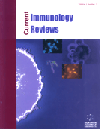- Home
- A-Z Publications
- Current Immunology Reviews (Discontinued)
- Previous Issues
- Volume 4, Issue 1, 2008
Current Immunology Reviews (Discontinued) - Volume 4, Issue 1, 2008
Volume 4, Issue 1, 2008
-
-
XBP-1 and the UPRosome: Mastering Secretory Cell Function
More LessAuthors: Laurie H. Glimcher and Claudio HetzA unique feature of secretory cells is the proliferation of the endoplasmic reticulum (ER) and Golgi network. The high demand imposed by protein synthesis and folding in secretory cells constitutes an endogenous source of stress due to the accumulation of toxic misfolded intermediaries. Adaptation to ER stress is mediated by the activation of a complex signal transduction pathway known as the unfolded protein response Read More
-
-
-
Natural Tregs in Systemic Lupus Erythematosus
More LessRegulatory CD4+ T cells are generated in the thymus and are distinguished from effector T cells by the expression of specific membrane antigens and by the intracellular expression of the transcription factor Foxp3. While the target antigens for regulatory T cells and their mechanisms of action remain poorly defined, several investigations have shown that these cells can contribute to the prevention of organ-specific autoimmuni Read More
-
-
-
Activated Lymph Nodes Recruit Blood Borne NK Cells and Effector T Cells:Implications for Adaptive T Cell Responses
More LessAuthors: Alfonso Martin-Fontecha, Greta Guarda, Antonio Lanzavecchia and Federica SallustoThe migration of naïve T cells to secondary lymphoid organs and their subsequent encounter with dendritic cells (DCs) ensures the efficient priming of adaptive T cell-mediated immune responses. The expression of particular sets of adhesion molecules and chemokine receptors allows effector T cells and natural killer (NK) cells to migrate to inflamed non-lymphoid tissues. Thus, the segregation of immune functions by specialized Read More
-
-
-
Bacterial Protein Microarrays for Diagnosis of Infectious Diseases
More LessAuthors: Didier Raoult, Cyrille J. Bonhomme and Patricia RenestoOver the past decade, the advent of genomics has facilitated the implementation of post-genomic strategies, including the application of new high-throughput technologies. Among the noticeable achievements is the protein microarray approach, a technology that is still in its infancy but that would greatly improve the diagnosis of bacterial pathogens. The present review summarizes the recent developments of this promising Read More
-
-
-
Distinct Functions of Interleukin-10 Derived from Different Cellular Sources
More LessAuthors: Axel Roers and Werner MullerThe defense against microbial infection by innate and adaptive immune responses bears the intrinsic risk of immune-mediated inflammatory “collateral” damage to host tissue. The cytokine interleukin-10 plays a central role in the control mechanisms, which limit inflammatory responses in order to prevent immunopathology. This pleiotropic soluble factor can be produced by a broad spectrum of different cell types. Intere Read More
-
-
-
Cosignaling Complexity Gets More Convoluted: The Emerging Importance of the B7-Like Butyrophilin Family of Immune Regulators
More LessAuthors: Joanne L. Viney, Heather A. Arnett and Ryan M. SwansonActivation of T cells is known to be modulated by positive or negative co-signaling molecules. The B7-family of costimulatory molecules has received the greatest attention in the past, and intervention in B7-family signaling pathways has proven to be an efficacious strategy for treating autoimmune diseases in the clinic. In recent months a new family of molecules has garnered interest -- the butyrophilins -- and early dat Read More
-
Most Read This Month
Article
content/journals/cir
Journal
10
5
false
en


